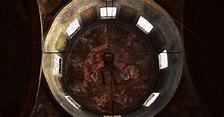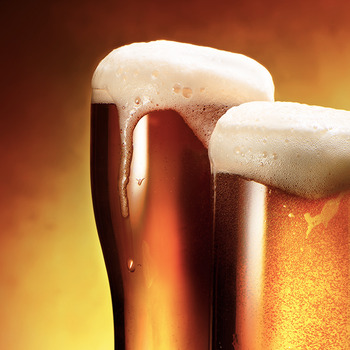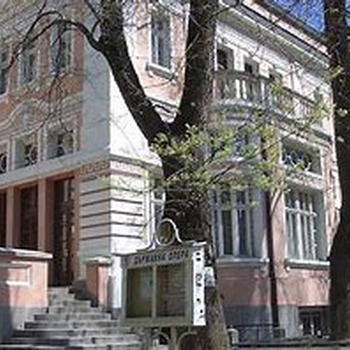Church " Presentation of the Blessed Virgin Mary"
Overview
Church " Presentation of the Blessed Virgin Mary" is an Orthodox church in the center of Stara Zagora, Bulgaria, under the authority of the Diocese of Stara Zagora.
Around 1715, Bulgarians from Novo Selo began to settle in the northeastern part of the town, Alton Top. A little later, Bulgarians from Novo Selo began to settle in the southeastern part of Eski Zaara and formed the neighborhood Aarja. The Church of St. Demetrius appeared in Alton Top, and the Church of the Holy Mother of God appeared in Akardzha, built with materials from the Novoselska church around 1763. Mr. Slavov describes the church as “its walls were made of thick mesh planks, not bricks. In the department on the north side there was a large shed where people gathered and went to church, when on major holidays, people could not gather inside the church. This church existed until 1837, when it was demolished and in its place the now existing stone church called Akarzhenska Church was built.
At the beginning of the 19th century, the Bulgarian population in the town - in the neighborhoods of Akardzha and Nova mahala - increased. In the summer of 1837 the old narrow church was demolished and a new church was built in its place with donations. The church is 31.5 m long, 18.50 m wide and 6 m high - dimensions unchanged during the restoration in 1881, only 2 steps lower. The columns were 12, as they are now. The walls start with a thickness of two meters and end 15 - 20 cm narrower to serve as supports. The windows and doors are fourth and low. The doors are two double on the north and south side and one double on the west. The construction is made of stone and lime with wooden holes, and the walls are lined with cut sandstone from the Chirpan region. The floor was covered with white and black marble in a checkerboard pattern - tiles that in 1881 were used for masonry.
After the burning of Stara Zagora in the Russo-Turkish war, in 1881 began collecting donations for the restoration of the temple - 32,560 groshes and 41,350 bricks were collected. On March 6, 1881, master Gancho Kanchev from Tryavna began construction. The consecration of the restored temple took place on October 8, 1881.
On October 5, 1912, in the church, Tsar Ferdinand I of Bulgaria read the manifesto for declaring the Balkan War.
The three bells with a total weight of 600 kilograms were donated by Vasil Zlatev and arrived in early February 1893. In 1892, the construction of the bell tower began with 15,000 groschen. The contract for its construction was concluded on July 1, 1894 and it was accepted on September 28, 1895. The plan is the work of District Engineer Friedris. Its price is 10,024 leva.
In 1924 - 1925 an extension was made on the west side of the church, as well as a colonnade on two floors by master Nestor Apostolov. The price is 373,270 leva. In 1954 the baptistery was turned into the chapel of St. Petka and on February 2, 1954 Metropolitan Kliment Stara Zagora laid an antimins in it.
The main part of the icons are the work of Georgi Danchov from Chirpan: on the iconostasis the icons of Jesus Christ, Presentation of the Blessed Virgin Mary, St. John the Forerunner, the apostles Peter and Paul and St. Theodore Stratilat. In 1910-1911 the Debar master and revolutionary Apostol Hristov painted the central curtain, the Crucifix with the forthcoming ones, the curtains of the south and north doors, the icons of the archangels Gabriel, Michael and St. Charalampius, all the apostolic and other icons of the iconostasis. The icons of St. Ivan Rilski and St. Spiridon are the work of Stefan Ivanov, and that of St. Nicholas is the work of Ivan Markvichka. The Debar master Hristo Blagoev also works in the temple.
The church was painted in 1923 - 1924 by Kiril Kanchev from Kalofer and Dimitar Mandov from Sofia, who painted the icon of the Presentation of the Blessed Virgin Mary above the entrance. The decoration was reworked in 1937 and Kiril Kanchev painted again on the dome Jesus Christ, and on the windowsills the images of the apostles Peter and Paul, Andrew, Thomas, Bartholomew, Philip, James, Simon. Below them in magnificent ornamentation are the images of the prophets Isaiah, Jeremiah, Elijah and Moses, and above the columns the four evangelists. The scenes of the Nativity of Christ and the Annunciation are painted in the altar.
The iconostasis was commissioned by the icon painter Georgi Danchov to Nikola Vassilev from Kalofer and together with the bishop's throne cost 200 pounds, donated by Prince Ferdinand I. On April 1, 1889 the iconostasis was placed and approved by the church board. In 1890 the Debar masters Yosif Filipov and Ivan Filipov made a crucifix for the iconostasis of the church for 1635 groschen, and in the following 1891 for 1360 groschen they made both side iconostasis on which the icons of the Introduction of the Mother of God and Saint Mina were placed.
Recommended
- Ancient Forum of Augustus Trajan
- Hall of Laughter
- Zoo
- Bedechka Park
- Neolithic dwellings museum
- Archaeological complex "Museum of Religions"


 Bulgarian
Bulgarian Romanian
Romanian




